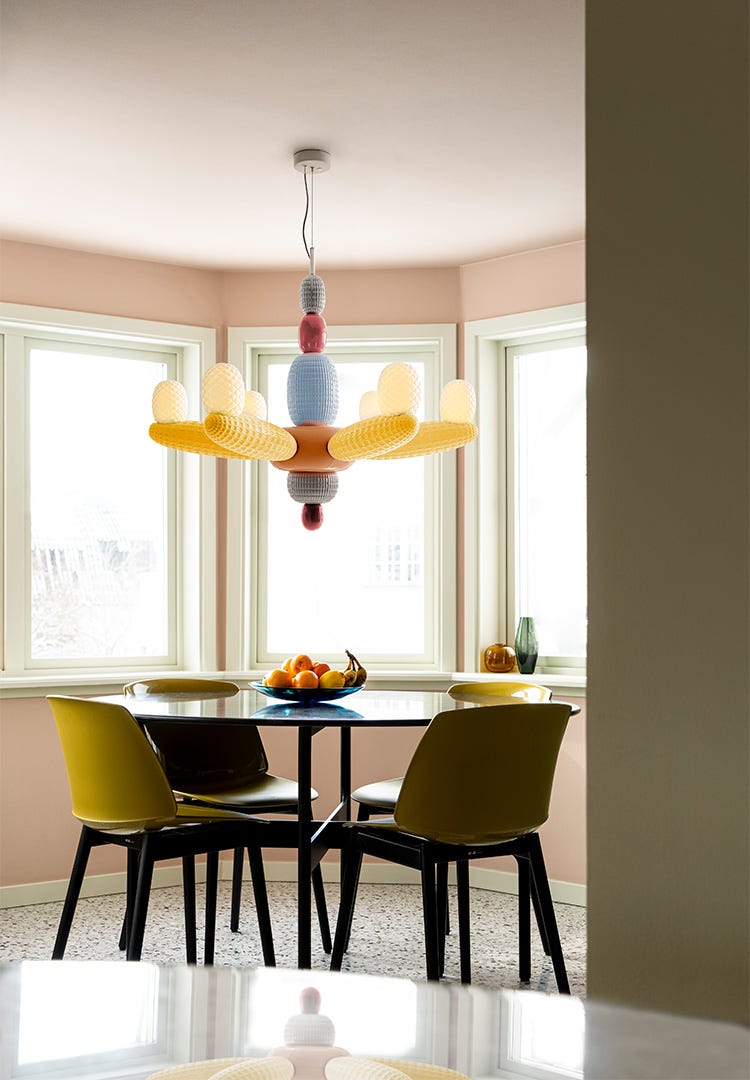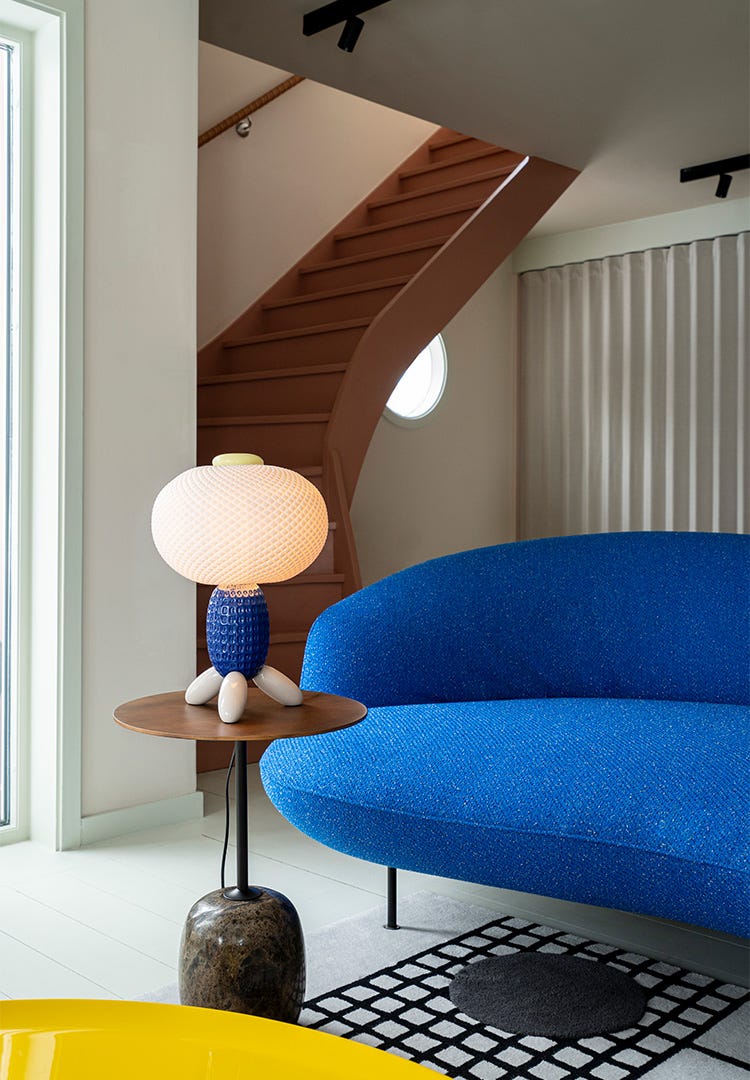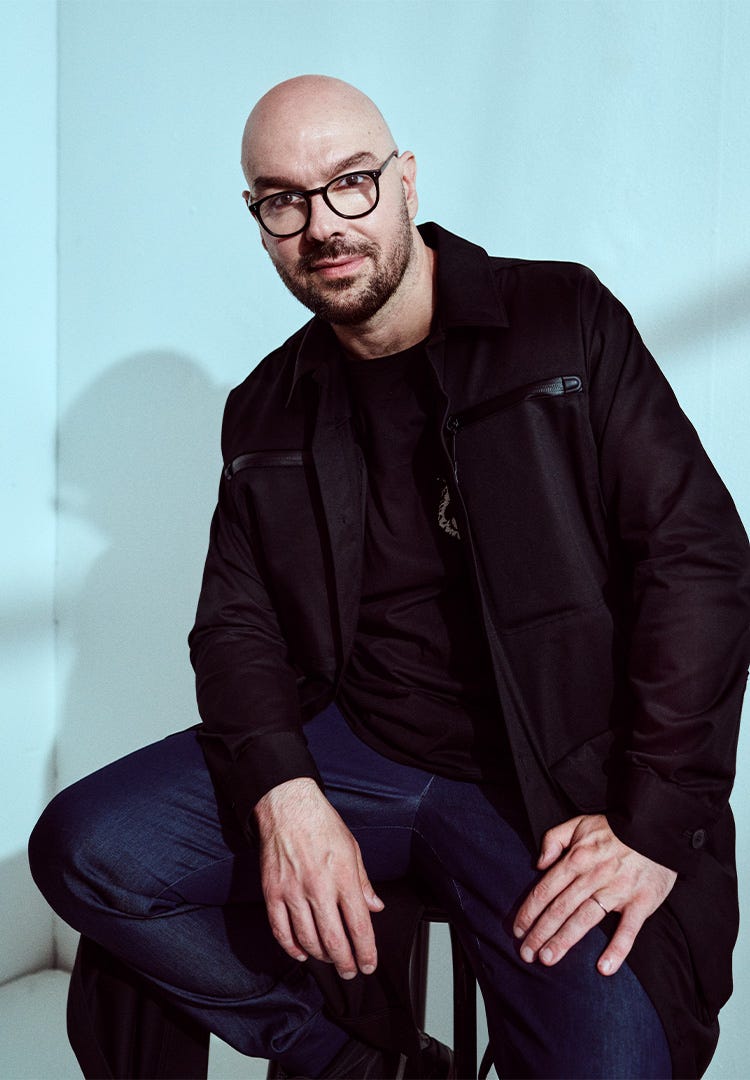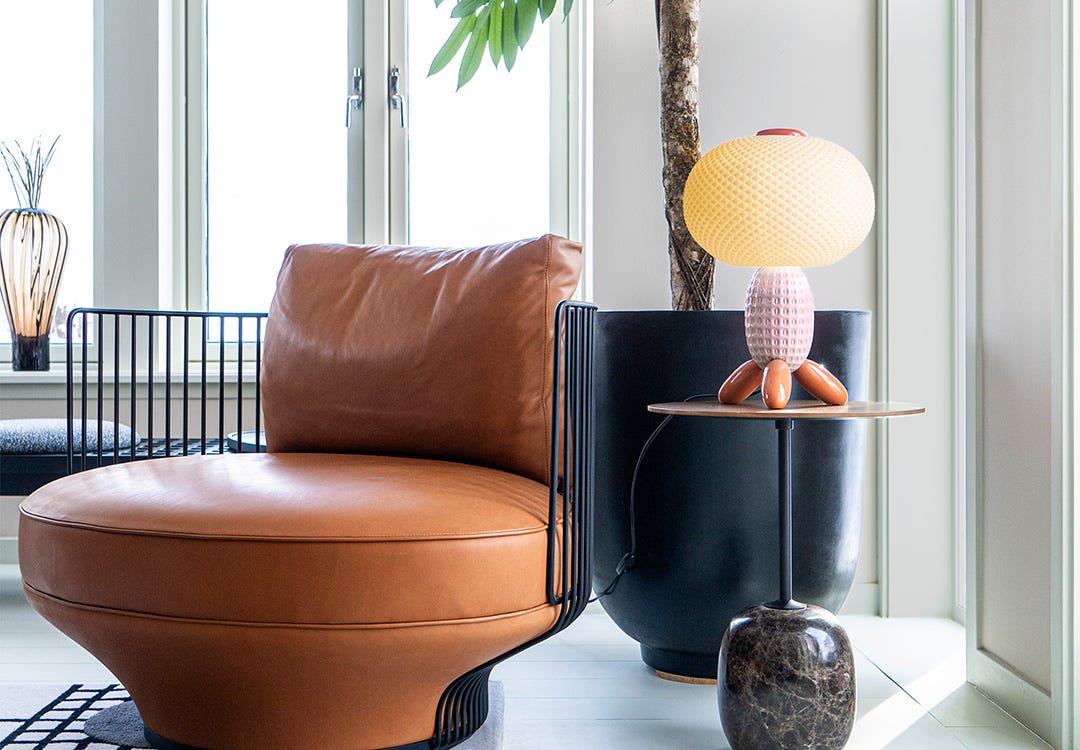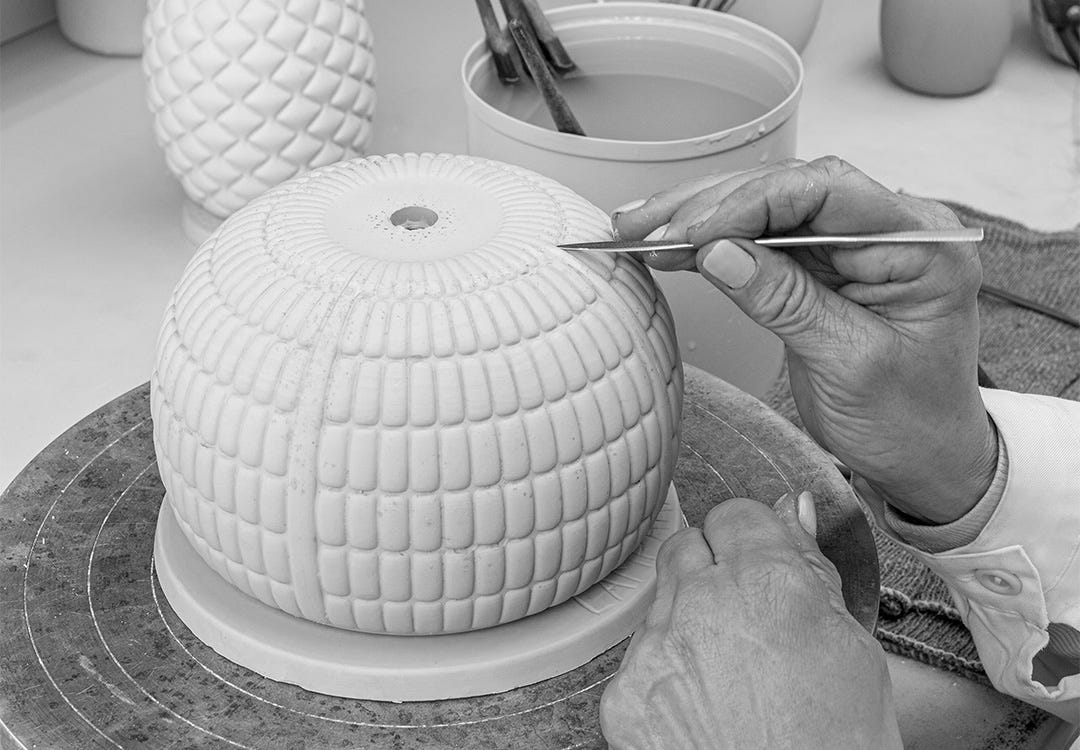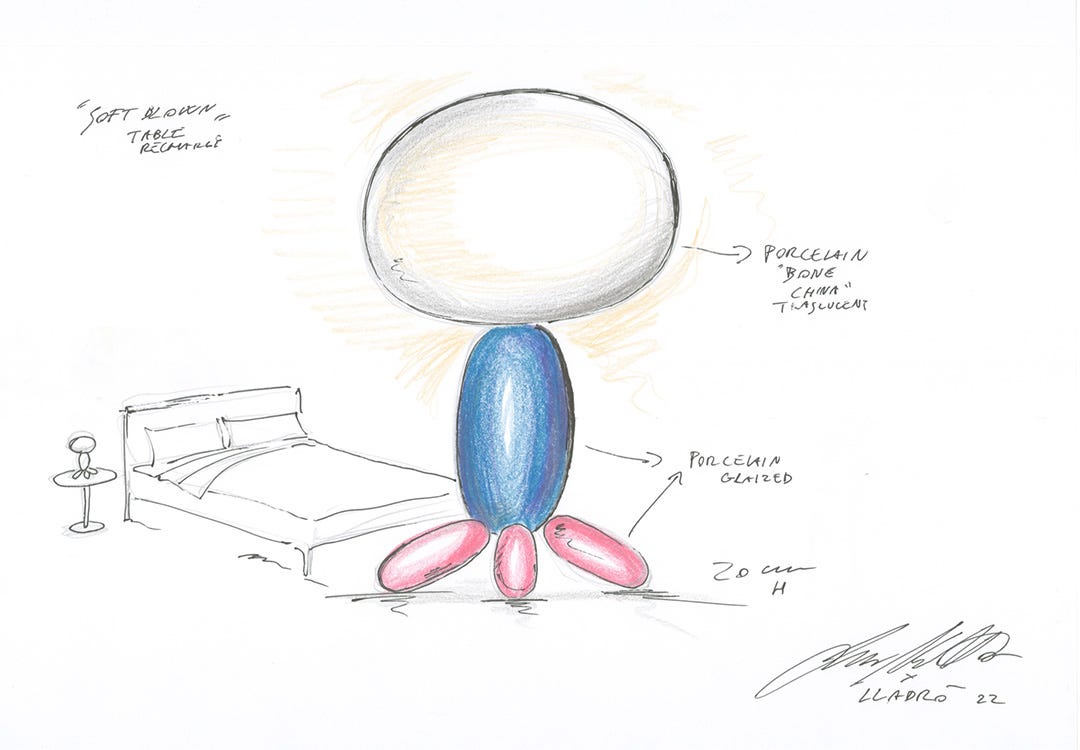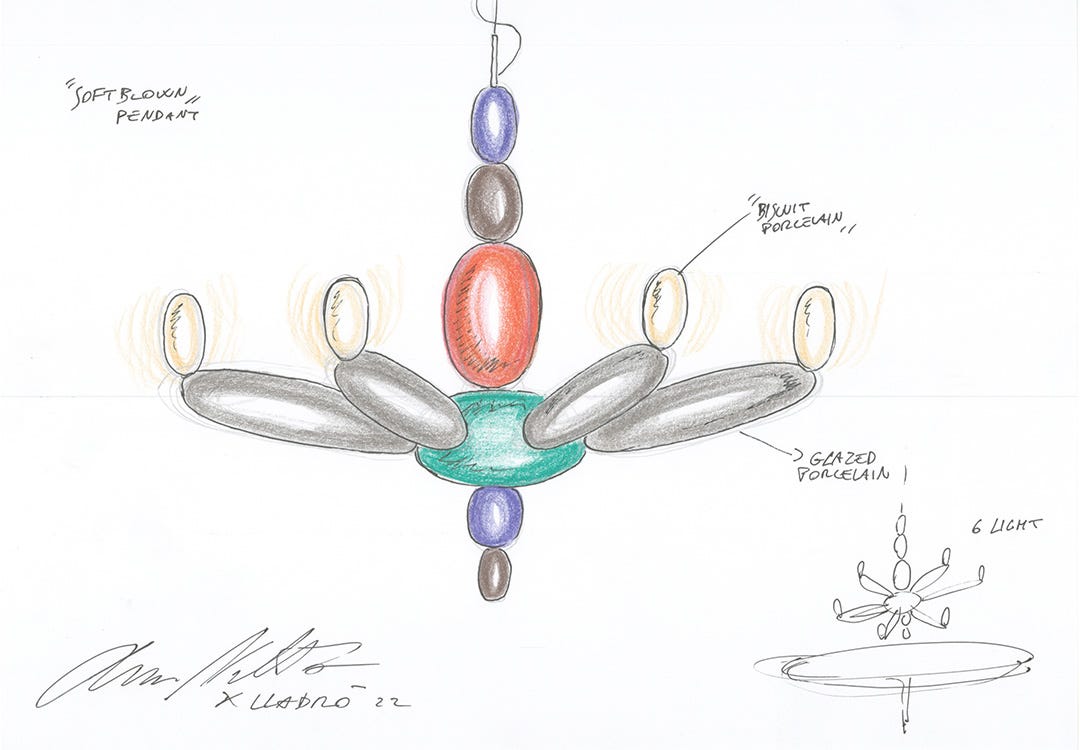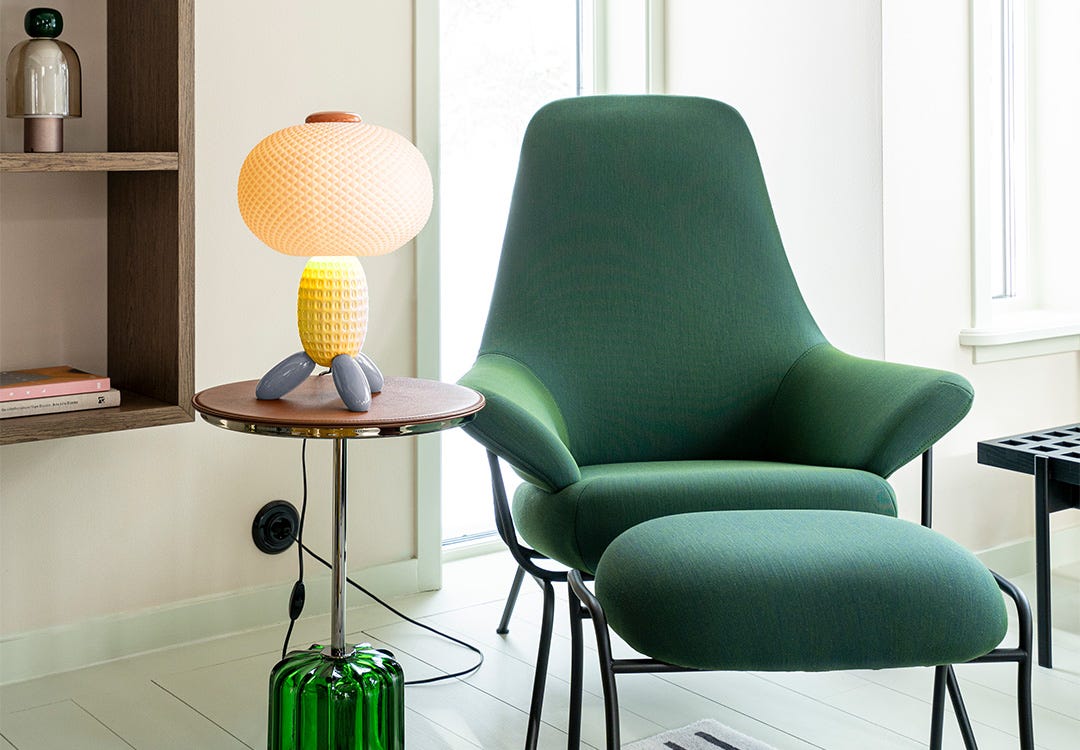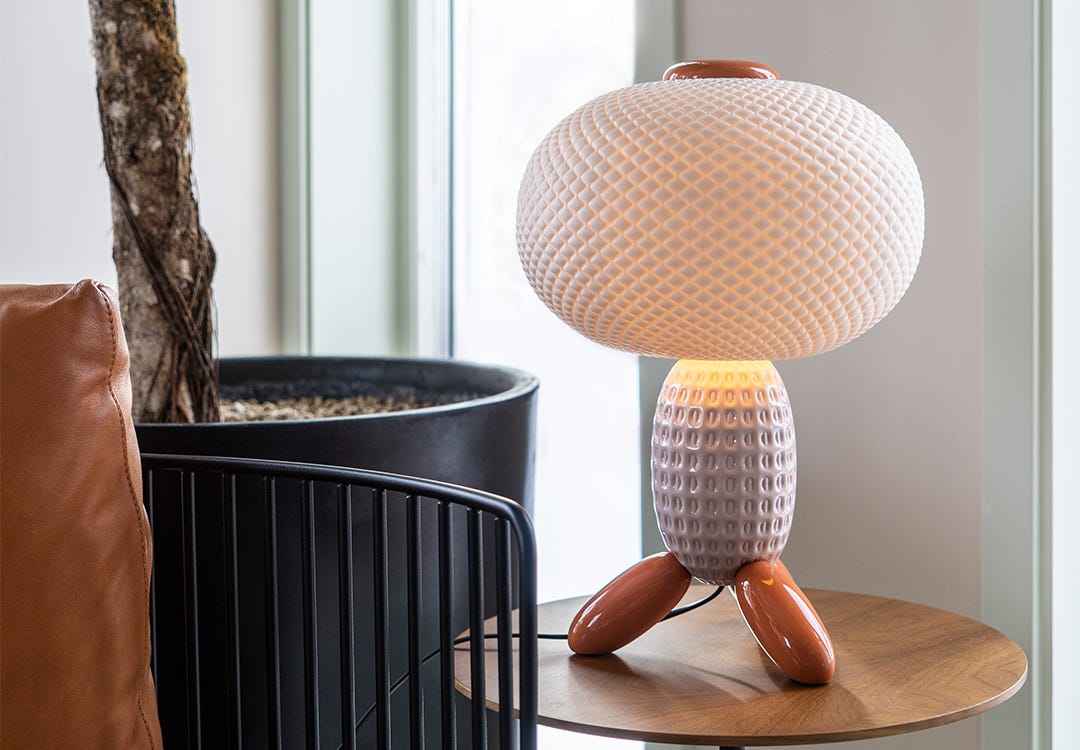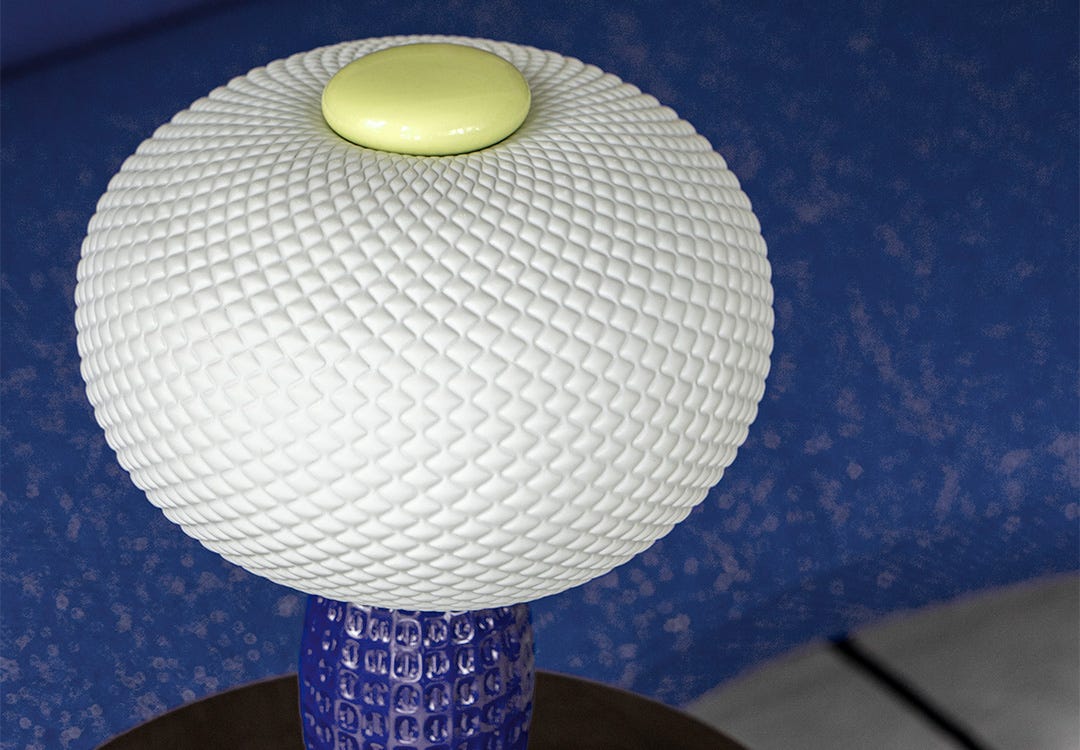Luca Nichetto, an acclaimed designer known for his empathetic approach to design, presents his latest collection, Soft Blown, in collaboration with Lladró. In this interview, we explore the inspiration behind the collection and Nichetto’s creative process. Learn how he seamlessly merges craftsmanship and technology, and his belief in the power of emotional design. Explore the unique qualities of porcelain and glass as materials, and the role they play in contemporary design.
With his revolutionary yet respectful approach, Nichetto brings a fresh perspective to Lladró’s 70-year legacy of handcrafted porcelain creations. Experience the transformative power of lighting and the character of design in various spaces as Nichetto invites us into his creative world.
The name of the collection is Soft Blown. Why this name? What does it refer to? What is behind it? And how did the idea come up?
Soft Blown is because the aesthetic of the collection that we did is almost replicating the idea of balloons. In ways it is like those street artists who take a balloon and make, for instance, a dog or maybe a chair, whatever. So, in a way they are creating abstract constructions of an existing object through these materials, through these balloons. So, the idea was to create a sort of character from the typical products that Lladró having been making for many years, especially big chandeliers, and to take this language and translate it into a real product, emphasizing the colorfulness, the playfulness of the blown object. And through the craftmanship of Lladró, which is so good at creating patterns to simulate reality, we want to create patterns that connect to the idea of those inflatable mattresses that people use on the beach. And these are also always with strong colors.
By the way, what I’m saying now is connected to the second question, what is your main inspiration for this collection. How would you describe the concept? Tell us about your approach to the mix between craftsmanship and technologies and lighting.
I think a good designer is like the conductor of an orchestra. In front of him he has a lot of different musicians with different skills and different approaches who play different instruments. In this case, we can compare technology with one musician, and craftmanship with another musician. Maybe one is playing the violin and the other one is playing the piano. If you want to make a beautiful concert you need to put together these two musicians and make them play perfectly.
So, I think technology and crafts is more or less the same: you need to know what they can do and what they can play, and then you need to take them and put them together to make a beautiful concert that, at the end of the day, is the product you are creating.
What place does «empathetic design» have for you in your creative process and, especially, in relation to the artisans of the Lladró workshop?
I come from a country where the empathy you create with the object in your surroundings is much more important than the function of the product. So, you can have a beautiful light, beautiful lamps, but if these lamps do not produce any kind of emotion, then that is a problem.
So, my idea is: I want to do objects that somehow tell you something, that make you smile and create emotion. And when you create emotion there is a strong connection with yourself and with who you are. This is what makes a design even more special.
Describe the color palette.
Well, of course, we want to play with very strong colors and we worked checking what Lladró have in their background. The idea was to select the colors based on the concept of these inflated objects, and to try to find a balance in making something that it’s still playful, still nice, but that also fits in different kinds of interiors, underlining the personality of the product.
Have you designed this first design for Lladró from your new studio in a transformed Swedish villa?
Yes, I designed this here, but saying that I designed it here sounds a little bit weird, because I also have a studio in Venice and colleagues working in Venice who are also actively involved in this process. I started making sketches in my notebook here, and then I immediately transferred to my studio in Venice. And then there was what I call a ping-pong process between the two studios to define the aesthetics.
You have worked with porcelain before. What are the attributes you appreciate most of this material? What do you think about porcelain’s creative potential in contemporary design?
There are a lot of similarities between porcelain and, for example, another material that I know pretty well from my origins, which is glass. Both these materials have a very strong relationship with fire and heat, and also with skills, with tradition, with heritage… So, for me, as a designer, and even more so as a person who has that kind of origin, being from Murano, it is a sort of mission to protect and help artisans and traditions to survive at a very turbulent moment, to push this process so that it is seen in a contemporary way and to also make younger generations appreciate them, to try to re-educate people in understanding the value of things, because, for many years, there were some giant companies that educated people to just buy things and throw them away. And when you are throwing things away, you disrespect not only the product and the energy behind it, but also your environment. So, in a way, I see this material, not only as protection and a re-interpretation of our legacy, but also as one of the best ways to respect our world: to teach people to buy less and buy better.
This year, Lladró celebrates its 70th anniversary, seven decades revolutionizing the world of porcelain through handcrafted processes. Do you share with Lladró this “revolutionary” approach to handmade creations?
I believe that being one step ahead, it is not so important how big the step is. It’s important to increase the perception of innovation, all the time. So, if we call being innovative, trying to be innovative in what we are doing revolution, then yes, I can say that I feel that I identify with the revolutionary approach. But if revolution means something is disruptive and completely different from the scenario that is surrounding us, no, because I think we also need to respect people’s behavior and what people can accept at this moment.
Tell us about the similarities between porcelain and glass – a material that you know very well since you began your professional career designing products for Salvati in Murano glass.
As I said before, there are a lot of similarities, a lot of constraints, a lot of secrets, and also a lot of human relationship. So, I think to make a good product in both these materials you need to be able to build up a very strong relationship, first with the process of the material and second, but equally important, also with the people that are realizing your idea.
So, if you have this respectful approach, but also a very clear idea of what you want to say and what you want to do, these two materials are very much something that I believe somehow can also be considered one material. So, there is no big difference between them.
In which spaces do you imagine your first creations for Lladró?
Honestly, having designed something with a very strong personality that gives a space a completely different perception through its personality, I think this is a characteristic that means that these products can work anywhere. It can be in a residential environment or it can be also in a contract environment, it can be in a very classic house, a very stylish house, a very postmodernist house… It doesn’t really matter. I think that having something that has a strong character is like jumping out of a comfort zone to be defined specifically for one single space. And I think this is also something for me, it’s kind of important not to do something that matches all the requirements that at this moment people think is what they want but it is also trying to push them to imagine this product as something they would never have expected to work.
Do you see the role of lighting in an interior as purely functional or is it more creative and emotional?
Well, for me it is 100% emotional. Lighting is one of the things that changes your behavior the most. I can say that because I live in Scandinavia where light is an issue. So, lighting really can change perception. To give an example: if you have a room that is furnished in a particular way, and you have a classical chandelier, let’s say in Murano glass, and then you decide to replace this chandelier with a design piece, maybe a suspension lamp, the quality of the light but also the feeling of the space changes completely, through one single product.
So, the power of lighting is much stronger than the power of furniture in changing the perception of a space. On many levels, and of course on the emotional, it is the strongest one.
